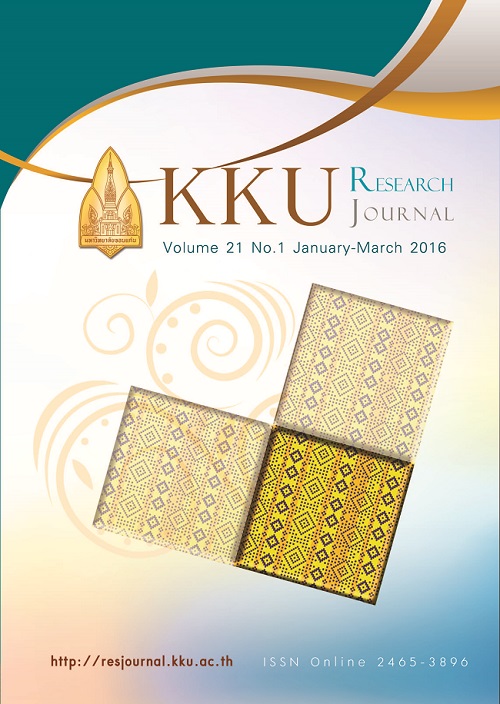A hybrid ARIMA and RBF neural network model for tourist quantity forecasting: a case study for Chiangmai province
Main Article Content
Abstract
Applications of a single model may not be able to capture different data patterns well enough, especially in the tourist forecast problem which is often complex in nature. An autoregressive integrated moving average (ARIMA) is a famous linear model while an artificial neural network (ANN) is a promising alternative to a traditional linear method. The ARIMA model may not be adequate for nonlinear problems while ANN can well reveal the correlation of nonlinear patterns. However, overfitting due to a learning process is the main disadvantage of ANN as well as being trapped in a local optimum for parameters optimization. To improve the forecast performance of both ARIMA and ANN for high accuracy, the two hybridization models, i.e. hybrid ARIMA-RBFNN model and hybrid RBFNN-ARIMA model are employed to examine the Chiangmai’s tourist time series data. Statistics test and parameter designed experiments were used to optimize these models and the sum-square of error (SSE) was used to indicate their performances. In this case study, the hybrid RBFNN-ARIMA model has proved that the RBFNN can priori capture the non-stationary non-linear component while the fully linearly stationary residuals were accurately predicted by ARIMA. The experimental results demonstrated that the hybrid RBFNN-ARIMA model outperformed 42% by averaging over the hybrid ARIMA-RBFNN model, an improvement of hybrid ARIMA-RBFNN model, RBFNN model, and ARIMA model.
Article Details
References
[2] Wang X., “A Hybrid Neural Network and ARIMA Model for Energy Consumption Forecasting,”
J. of Comp., vol. 7, no. 5, May 2012.
[3] Claveria O. and Torra S., “Forecasting Tourism Demand to Catalonia:Neural Networks vs. Time Series
Models,” Economic Modelling,36(2014), pp. 220-228.
[4] Zhang G., Patuwo B.E., and Hu M.Y., “Forecasting with Artificial Neural Networks: The State of the
Art,” Int. J. of Forecasting 14(1998),35-62.
[5] Marquee L., Connor M.O. and Remus W., “Artificial Neural Network Models for Forecasting
and Decision Making,” Int. J. of Forecasting, vol. 10, issue 1, 1994.
[6] Law R. and Au N., “A Neural Network Model to Forecast Japanese Demand for Travel to
H o n g K o n d , ” T o u r i s m Management, 20(1999), pp. 89-97.
[7] Zhang H.Q. and Li J.B., “Prediction of Tourist Quantity Based on RBF Neural Network,” J. of Computers,
vol. 7, no.4, 2012.
[8] Sing J.K., Basu D.K., Nasipuri M.and Kundu M., “Improved K-means Algorithm in the Design of RBF
Neural Networks,” IEEE, vol.2,2003.
[9] Chen S., Cowen C.F.N and Grant P.M, “Orthogonal Least Square Learning Algorithm for Radial
Basis Function Networks,” IEEE Trans. on NN, vol.2, no. 2, 1991.
[10] Seymour G., Predictive Inference,New York, NY:Chapman and Hall,ISBN 0-412-03471-9, 1993.
[11] Ehem A., Introduction to machine learning, Cambridge Mass.[u.a.]:MIT Press, 2004.
[12] James O. B., Statistical decision theory and Bayesian analysis,Berlin:Springer-Verlag, 1985.
[13] Chatfield C., “Model uncertainty and forecast accuracy,” J.Forecasting, vol. 15, 1996, pp.495-508.
[14] Khashei M. and Bijari M.,“An Artificial Neural Network(p,d,q) Model for Timeseries Forcasting,” J. of Expert Systems with Application, vol. 37, 2010,pp.479-489
[15] http://www.tourism.go.th/home/listcontent/11/221/276 (last accessed 12/9/2014).


